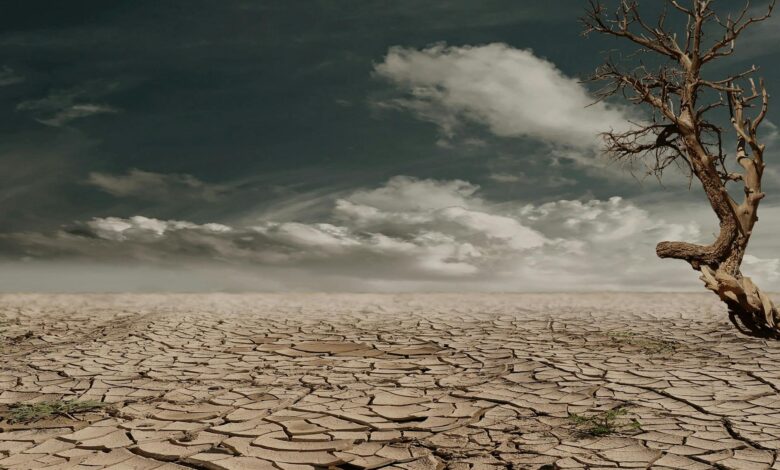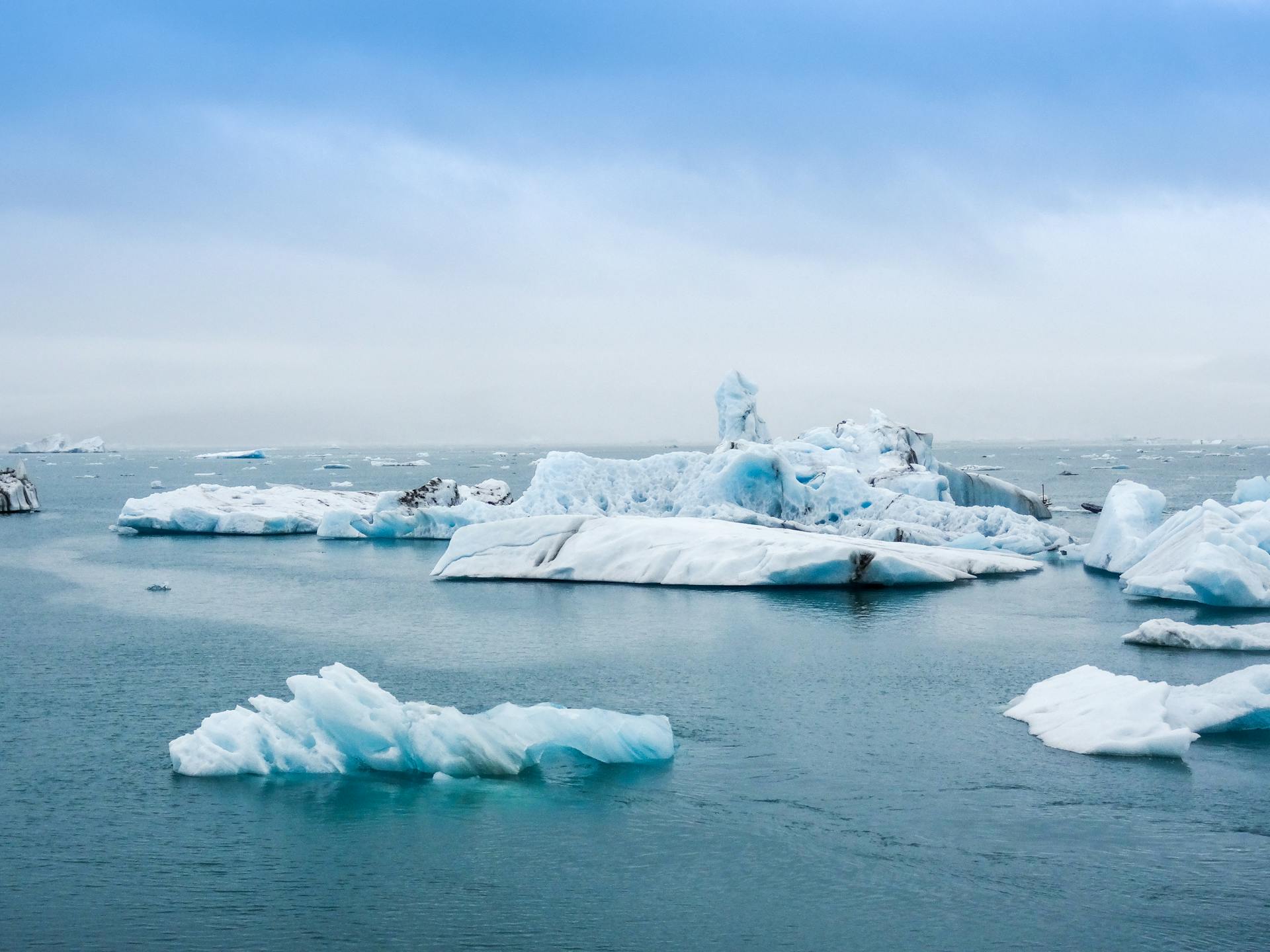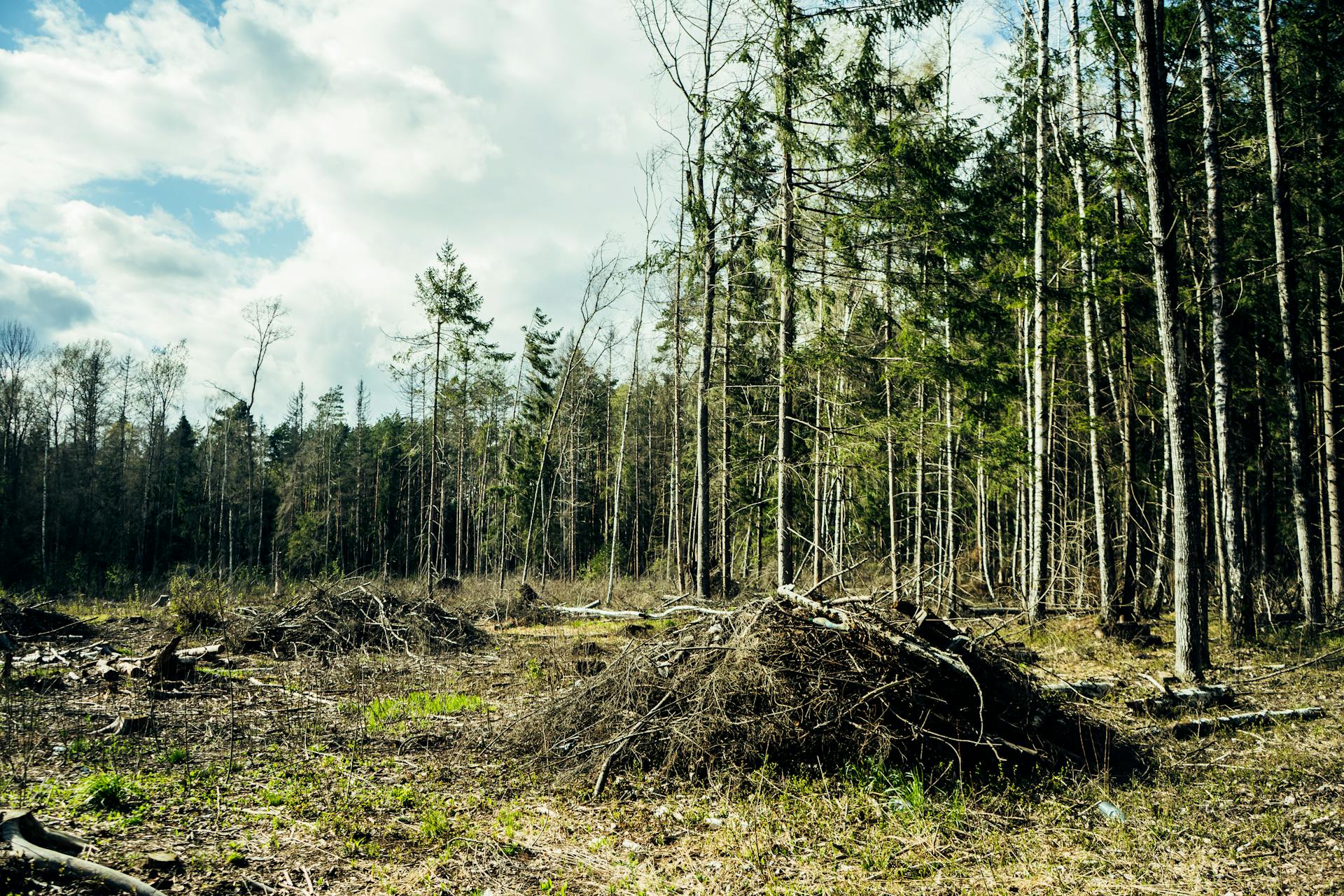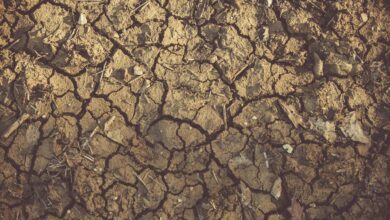The Environmental Effects of Climate Change

Climate change is not a new concept; it has been a topic of scientific inquiry for decades. However, the pace and magnitude of the changes we are witnessing today are unprecedented, and the impacts are becoming increasingly evident across the globe. From rising sea levels to extreme weather events, from biodiversity loss to food insecurity, the effects of climate change are widespread and profound.
As we delve deeper into understanding the far-reaching effects of climate change, it is crucial to recognize the urgency of the situation and the need for collective action. This article aims to provide a comprehensive overview of the various impacts of climate change, highlighting the interconnectedness of these issues and the importance of taking immediate steps to mitigate and adapt to these changes.
Rising global temperatures and extreme weather events
One of the most significant effects of climate change is the rise in global temperatures. The Earth’s average surface temperature has risen by approximately 1.1°C (2°F) since the late 19th century, and this trend is expected to continue if greenhouse gas emissions are not significantly reduced.
The increase in global temperatures has far-reaching consequences, including:
- Extreme weather events: Climate change is contributing to an increase in the frequency and intensity of extreme weather events such as heatwaves, droughts, floods, and hurricanes. These events can have devastating impacts on communities, infrastructure, and ecosystems.
- Disruption of weather patterns: Changes in temperature and precipitation patterns can disrupt established weather patterns, leading to shifts in growing seasons, water availability, and the distribution of plant and animal species.
- Melting of glaciers and ice caps: Rising temperatures are causing the accelerated melting of glaciers and ice caps, which contribute to sea-level rise and can disrupt freshwater supplies for millions of people.
The effects of rising temperatures and extreme weather events are far-reaching, impacting agriculture, water resources, human health, and ecosystems. Adapting to these changes will require significant investments in infrastructure, disaster preparedness, and resilience-building measures.
Also read: The Urgency of Addressing Climate Change: A Call to Action for a Sustainable Future
Melting ice caps and rising sea levels

One of the most visible and concerning effects of climate change is the melting of ice caps and glaciers, which is leading to a rise in sea levels worldwide. As the Earth’s temperature continues to increase, the rate of ice melt accelerates, exacerbating the problem.
The impacts of rising sea levels are multifaceted:
- Coastal flooding: Low-lying coastal areas and small island nations are at risk of being inundated by rising sea levels, leading to the displacement of millions of people and the loss of valuable infrastructure and resources.
- Saltwater intrusion: Rising sea levels can cause saltwater to intrude into freshwater sources, such as aquifers and rivers, threatening water supplies and agricultural productivity.
- Ecosystem destruction: Coastal ecosystems, such as mangrove forests and coral reefs, are vulnerable to the effects of rising sea levels, potentially leading to the loss of biodiversity and essential ecosystem services.
Addressing the issue of melting ice caps and rising sea levels requires a global effort to reduce greenhouse gas emissions and implement adaptation strategies, such as coastal protection measures, relocation of vulnerable communities, and the development of resilient infrastructure.
Deforestation and loss of biodiversity
Climate change is exacerbating the already alarming rates of deforestation and biodiversity loss. Deforestation, primarily driven by human activities such as agriculture, urbanization, and resource extraction, contributes to climate change by releasing stored carbon into the atmosphere and reducing the planet’s ability to absorb and store carbon dioxide.
The loss of biodiversity due to climate change is a pressing concern, as it threatens the delicate balance of ecosystems and the services they provide. Rising temperatures, changing precipitation patterns, and the increased frequency of extreme weather events can disrupt the habitats and life cycles of various species, leading to population declines and potential extinctions.
The impacts of deforestation and biodiversity loss are far-reaching:
- Ecosystem disruption: The loss of species can lead to the collapse of entire ecosystems, with cascading effects on the services they provide, such as water purification, pollination, and nutrient cycling.
- Loss of genetic diversity: The extinction of species represents an irreversible loss of genetic diversity, which is crucial for the resilience and adaptability of ecosystems in the face of changing environmental conditions.
- Cultural and economic impacts: Many indigenous communities and local economies rely on the resources and services provided by forests and biodiversity, and their loss can have devastating consequences for their livelihoods and cultural traditions.
Addressing deforestation and biodiversity loss requires a multifaceted approach that includes sustainable land-use practices, conservation efforts, and the promotion of biodiversity-friendly policies and initiatives.
Also read: Examining the Effective Steps Governments Have Taken to Combat Climate Change
Impact on agriculture and food security

Climate change poses a significant threat to global food security, as it affects agricultural productivity and the availability of resources essential for food production. The impacts of climate change on agriculture are multifaceted and vary across regions, but some common challenges include:
- Crop yield reductions: Changes in temperature, precipitation patterns, and the increased frequency of extreme weather events can lead to crop failures, reduced yields, and increased pest and disease pressure, threatening food supplies.
- Water scarcity: Shifting precipitation patterns and the melting of glaciers can result in water scarcity in some regions, limiting the availability of water for irrigation and agricultural production.
- Soil degradation: Extreme weather events, such as droughts and floods, can contribute to soil erosion and the loss of fertile topsoil, reducing the productivity of agricultural lands.
- Livestock impacts: Climate change can affect the health and productivity of livestock, as well as the availability of feed and water resources.
The impacts of climate change on agriculture and food security have far-reaching consequences, not only for food availability but also for economic stability, social unrest, and human health. Addressing these challenges requires a multifaceted approach that includes sustainable agricultural practices, improved water management, and the development of climate-resilient crop varieties and farming techniques.
Health implications of climate change
Climate change poses significant risks to human health, both directly and indirectly. The impacts of climate change on health are diverse and interconnected, ranging from the spread of infectious diseases to the exacerbation of existing health conditions.
Some of the key health implications of climate change include:
- Heat-related illnesses: Rising temperatures and more frequent and intense heatwaves can increase the risk of heat-related illnesses, such as heat exhaustion and heatstroke, particularly among vulnerable populations like the elderly, young children, and those with pre-existing medical conditions.
- Respiratory diseases: Climate change can contribute to the increased prevalence of respiratory diseases, such as asthma and chronic obstructive pulmonary disease (COPD), due to factors like air pollution, wildfires, and the spread of allergens.
- Vectorborne and waterborne diseases: Changes in temperature and precipitation patterns can alter the distribution and behavior of disease vectors like mosquitoes and ticks, leading to the potential spread of diseases like malaria, dengue fever, and Lyme disease.
- Food and water insecurity: Climate change can impact food and water supplies, leading to malnutrition and increased risks of waterborne diseases, particularly in regions with limited resources and infrastructure.
- Mental health impacts: The stress and trauma associated with extreme weather events, displacement, and the loss of livelihoods can have significant impacts on mental health and well-being.
Addressing the health implications of climate change requires a multidisciplinary approach that involves strengthening healthcare systems, improving disease surveillance and response capabilities, and promoting public health education and awareness.
Also read: 5 Promising Solutions to Climate Change
Economic consequences of climate change
Climate change has significant economic consequences that can impact various sectors and industries, with far-reaching implications for global economic stability and growth. The economic impacts of climate change are multifaceted and interconnected, and they can manifest in both direct and indirect ways.
Some of the key economic consequences of climate change include:
- Infrastructure damage and disruption: Extreme weather events, such as hurricanes, floods, and wildfires, can cause extensive damage to infrastructure, including buildings, transportation systems, and energy infrastructure, resulting in costly repairs and disruptions to economic activities.
- Agricultural losses: Climate change can lead to crop failures, reduced yields, and livestock losses, impacting food production and potentially contributing to food price volatility and food insecurity.
- Tourism and recreation impacts: Changes in weather patterns, sea-level rise, and the degradation of natural resources can negatively impact tourism and recreation industries, which are significant economic drivers in many regions.
- Health and productivity impacts: The health implications of climate change, such as heat-related illnesses and the spread of diseases, can lead to increased healthcare costs and reduced productivity, impacting economic output.
- Displacement and migration: Climate-related events, such as sea-level rise and natural disasters, can force people to relocate, resulting in economic disruptions and strains on resources in the areas where they resettle.
- Insurance and financial risks: Climate change can increase the frequency and severity of extreme weather events, leading to higher insurance claims and potential financial instability for insurance companies and other financial institutions.
Addressing the economic consequences of climate change requires a comprehensive approach that involves investing in resilient infrastructure, supporting sustainable economic diversification, and promoting policies and initiatives that facilitate a transition towards a low-carbon economy.
Social and political implications
Climate change has far-reaching social and political implications that can exacerbate existing inequalities, contribute to social unrest, and strain international cooperation and governance structures. The impacts of climate change are not distributed evenly, with marginalized and vulnerable communities often bearing a disproportionate burden.
Some of the key social and political implications of climate change include:
- Displacement and migration: Climate-related events, such as sea-level rise, drought, and natural disasters, can force people to leave their homes and communities, leading to internal and international migration flows that can strain resources and social structures in receiving areas.
- Food and water insecurity: The impacts of climate change on agriculture and water resources can contribute to food and water insecurity, particularly in regions already facing poverty and limited access to resources, potentially exacerbating social tensions and conflicts.
- Conflict and political instability: The competition for dwindling resources, such as arable land and water, can lead to social unrest, conflicts, and political instability, particularly in regions with existing tensions and weak governance structures.
- Human rights implications: Climate change can exacerbate existing human rights challenges, such as the right to food, water, and adequate housing, disproportionately affecting marginalized and vulnerable communities.
- International cooperation challenges: Addressing the global challenge of climate change requires unprecedented levels of international cooperation and coordination, which can be hindered by conflicting national interests, geopolitical tensions, and differing priorities among nations.
Addressing the social and political implications of climate change requires a multifaceted approach that involves strengthening international cooperation, promoting human rights and social justice, and investing in sustainable development and resilience-building measures, particularly in vulnerable regions and communities.
Climate change mitigation and adaptation strategies
Addressing the far-reaching effects of climate change requires a two-pronged approach: mitigation and adaptation. Mitigation strategies aim to reduce greenhouse gas emissions and slow the pace of climate change, while adaptation strategies focus on preparing for and responding to the impacts of climate change that are already occurring or are expected to occur.
Mitigation strategies may include:
- Transitioning to renewable energy sources: Promoting the development and widespread adoption of renewable energy sources, such as solar, wind, and hydroelectric power, can significantly reduce greenhouse gas emissions from the energy sector.
- Improving energy efficiency: Implementing energy-efficient practices and technologies in various sectors, including transportation, buildings, and industry, can reduce energy consumption and associated greenhouse gas emissions.
- Sustainable land-use practices: Promoting sustainable forestry, agriculture, and urban planning practices can help to reduce deforestation, protect carbon sinks, and minimize the environmental impact of human activities.
- Carbon capture and storage: Developing and implementing technologies that capture and store carbon dioxide emissions from industrial processes and power plants can help mitigate the release of greenhouse gases into the atmosphere.
Adaptation strategies may include:
- Resilient infrastructure: Investing in the development of resilient infrastructure, such as flood-resistant buildings, strengthened coastal defenses, and improved water management systems, can help communities better withstand the impacts of climate change.
- Ecosystem-based adaptation: Protecting and restoring natural ecosystems, such as wetlands, mangrove forests, and coral reefs, can enhance their ability to provide essential services and buffer against the impacts of climate change.
- Climate-smart agriculture: Adopting sustainable agricultural practices, such as crop diversification, water-efficient irrigation techniques, and the use of drought-resistant crop varieties, can help farmers adapt to changing climatic conditions.
- Early warning systems: Developing and implementing effective early warning systems for extreme weather events, such as hurricanes and heatwaves, can help communities prepare and respond more effectively, reducing the potential for loss of life and property damage.
- Climate-resilient urban planning: Incorporating climate change considerations into urban planning and design can help cities adapt to the impacts of climate change, such as rising temperatures, sea-level rise, and increased precipitation.
Effective climate change mitigation and adaptation strategies require a collaborative effort involving governments, businesses, civil society organizations, and individuals, as well as a commitment to sustainable development and the integration of climate change considerations into decision-making processes across various sectors.
The role of individuals in combating climate change
While addressing the far-reaching effects of climate change requires coordinated efforts at the global, national, and local levels, individuals also play a crucial role in mitigating and adapting to these changes. Every person’s actions and choices can contribute to reducing greenhouse gas emissions and building resilience to the impacts of climate change.
Here are some ways individuals can contribute to combating climate change:
- Reduce energy consumption: Adopting energy-efficient practices at home, such as using energy-efficient appliances, properly insulating buildings, and turning off lights and electronics when not in use, can significantly reduce energy consumption and associated greenhouse gas emissions.
- Transition to renewable energy sources: Where possible, individuals can consider switching to renewable energy sources, such as solar or wind power, or supporting the development of renewable energy projects through investments or advocacy efforts.
- Adopt sustainable transportation choices: Reducing reliance on personal vehicles by opting for public transportation, carpooling, cycling, or walking can significantly reduce greenhouse gas emissions from the transportation sector.
- Reduce, reuse, and recycle: Adopting a mindset of reducing waste, reusing products and materials, and properly recycling can help minimize the environmental impact of consumption and reduce greenhouse gas emissions associated with waste management.
- Support sustainable agriculture and food choices: Choosing locally sourced, organic, and plant-based foods can reduce the carbon footprint associated with industrial agriculture and long-distance transportation of food products.
- Engage in community action and advocacy: Individuals can participate in community-based initiatives, such as tree-planting campaigns, clean-up efforts, and advocacy for climate-friendly policies and practices at the local and national levels.
- Educate and raise awareness: Sharing knowledge and raising awareness about the impacts of climate change and the importance of taking action can help inspire others to adopt more sustainable practices and support climate change mitigation and adaptation efforts.
By making conscious choices and taking individual actions, people can collectively contribute to a more sustainable future and help mitigate the far-reaching effects of climate change on our planet and future generations.
The impacts of climate change are far-reaching and affect every aspect of our lives. It’s time to take action and make a difference. Join the movement to combat climate change by making sustainable choices in your daily life. Reduce your carbon footprint, support renewable energy initiatives, and advocate for climate-friendly policies. Together, we can create a better future for our planet and future generations. Visit [website link] to learn more about how you can get involved and make a positive impact.
Conclusion: The urgent need for action
Climate change is one of the greatest challenges facing humanity in the 21st century. The far-reaching effects of climate change are already being felt across the globe, impacting our environment, economies, societies, and the very systems that sustain life on Earth.
From rising global temperatures and extreme weather events to melting ice caps and rising sea levels, the impacts of climate change are multifaceted and interconnected. These changes are exacerbating existing challenges, such as deforestation, biodiversity loss, food insecurity, and water scarcity, while also posing new threats to human health, economic stability, and social cohesion.
Addressing the far-reaching effects of climate change requires a comprehensive and coordinated approach that combines mitigation strategies to reduce greenhouse gas emissions and adaptation strategies to prepare for and respond to the impacts that are already occurring or are expected to occur.
Governments, businesses, civil society organizations, and individuals all have a role to play in combating climate change. Through collective action, policy reforms, technological innovations, and individual lifestyle choices, we can work towards a more sustainable future and protect our planet for future generations.
The time for action is now. Delaying or ignoring the issue of climate change will only exacerbate the challenges we face and make the consequences more severe and harder to address. The scientific evidence is clear, and the impacts are already being felt across the globe.
We must act with urgency and determination to mitigate the causes of climate change and adapt to its inevitable effects. This requires a fundamental shift in our attitudes, behaviors, and systems – from the way we produce and consume energy to the way we manage our natural resources and plan our cities.
Transitioning to a low-carbon economy and embracing sustainable practices is not only an environmental imperative but also an economic and social necessity. By investing in clean energy, sustainable agriculture, and resilient infrastructure, we can create new opportunities for innovation, job creation, and economic growth while safeguarding our planet for future generations.
The task ahead is daunting, but the consequences of inaction are far more severe. We owe it to ourselves, our children, and the countless species that share this planet to take bold and decisive action against climate change.
It is a collective responsibility that transcends borders, political ideologies, and generations. Every individual, every community, every nation must play its part in this global effort. Together, we can build a more sustainable, resilient, and equitable future for all.
The time for complacency and denial has passed. The time for action is now. Let us rise to the challenge and embrace the opportunity to create a better world for ourselves and for those who will inherit it.
Also read: Climate Change: All You Need to Know




